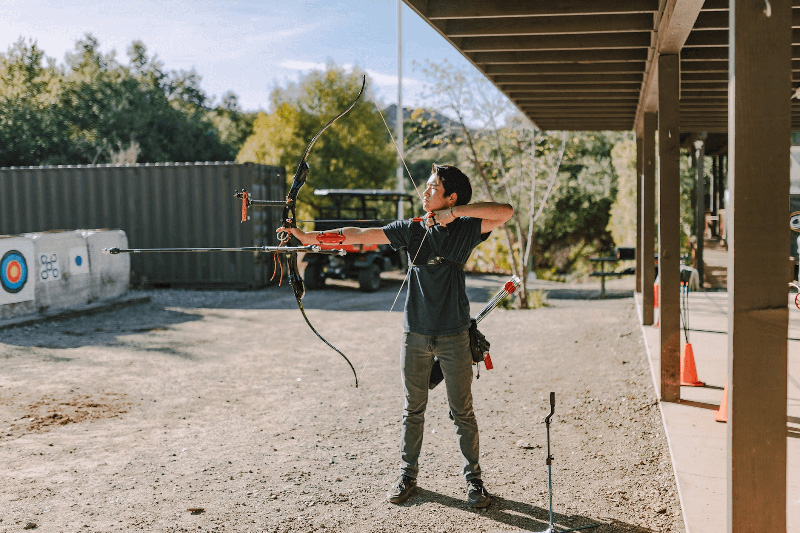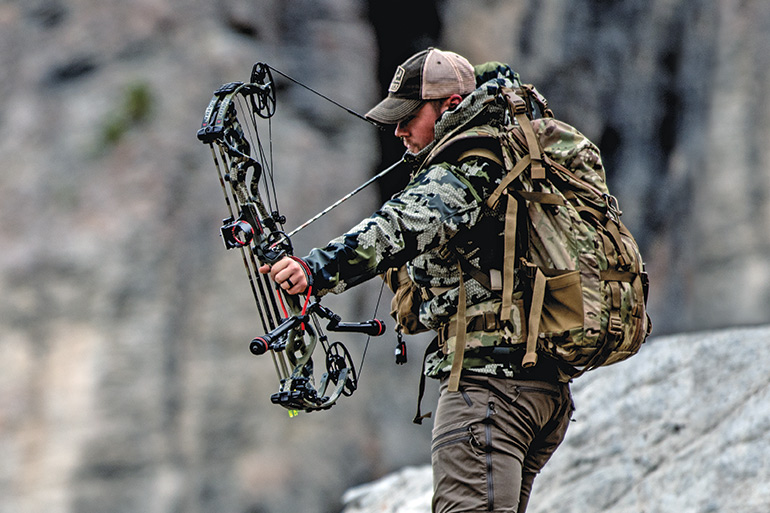Maximizing Your Archery Efficiency With the Right Compound Bow Stabilizer: a Detailed Overview
In the realm of precision, consistency and archery are vital to attaining ideal performance. One often-overlooked yet critical part in boosting accuracy is the compound bow stabilizer. This unassuming tool plays a substantial function in steadying your goal, decreasing bow torque, and absorbing resonances. The efficiency of a stabilizer hinges on various factors, consisting of weight, design, and positioning. By recognizing the nuances of selecting and maximizing a compound bow stabilizer, archers can adjust their devices to elevate their capturing experience to new degrees of efficiency and control.
Significance of Bow Stabilizers in Archery

Furthermore, bow stabilizers assist in stabilizing the weight circulation of the bow, which can enhance the archer's stability while firing and intending. By adding weight to the front of the bow, stabilizers can decrease the quantity of torque experienced upon launch, resulting in a smoother and a lot more regulated shot - compound bow stabilizer. This weight circulation likewise assists in holding the bow constant for a longer period, allowing the archer to aim extra properly
Kinds Of Compound Bow Stabilizers
When considering the numerous types of compound bow stabilizers readily available, it is necessary to recognize their distinct features and features to figure out the most suitable alternative for taking full advantage of archery efficiency. The most common types of compound bow stabilizers include sidebar stabilizers, front stabilizers, and back stabilizers. Back stabilizers, additionally called back stabilizers, are installed to the back of the bow and aid in counterbalancing the weight of various other devices, resulting in improved security and constant aiming.
Aspects to Think About When Choosing
In examining substance bow stabilizers, understanding the unique attributes and features of each type is crucial for making an informed decision on one of the most ideal choice to enhance archery performance. When choosing a stabilizer, one have to consider the weight of the stabilizer Our site itself. While a larger stabilizer can provide more stability by reducing the bow's motion, it might likewise cause exhaustion throughout lengthy shooting sessions. Equilibrium is one more vital aspect to contemplate. The stabilizer's length and design dramatically influence the bow's equilibrium, impacting the shooter's capacity to hold steady objective. In addition, the product of the stabilizer can influence its efficiency. Carbon fiber stabilizers are light-weight and soak up vibrations well, enhancing accuracy. The number and adjustability of dampeners on the stabilizer can adjust its efficiency by reducing noise and shock upon release. By thoroughly examining these variables, archers can pick a compound bow stabilizer that aligns with their shooting style and maximizes their general performance on the archery range.
Setup and Modification Tips
For optimum efficiency and precision in archery, mastering the setup and adjustment of your bow stabilizer is necessary. Appropriate installation page begins with attaching the stabilizer to the bow's riser, ensuring it is securely safeguarded.
When readjusting the stabilizer, start with little incremental modifications instead than drastic adjustments. Pay interest to just how the bow responds to changes in stabilizer settings and make changes as necessary. Routinely inspect the stabilizer's rigidity and general problem to guarantee it proceeds to operate optimally.
Upkeep and Treatment Standards

It is also vital to store your bow with the stabilizer in a secure and safe place when not in use. Avoid leaving it in extreme temperature levels or revealed to route sunshine for extensive durations, as this might trigger damage to the stabilizer. Occasionally inspect the stabilizer's positioning to ensure it is still effectively placed on your bow. Adhering to these upkeep and care guidelines will help you get more obtain the most out of your bow stabilizer and enhance your total archery performance.
Verdict
Finally, choosing the right substance bow stabilizer is essential for maximizing archery efficiency. Understanding the relevance, kinds, elements to think about, setup and adjustment pointers, as well as upkeep and treatment guidelines can greatly affect one's accuracy and uniformity in shooting. By choosing a stabilizer that suits specific requirements and preferences, archers can improve their overall efficiency and attain much better outcomes on the range or in competition.
Bow stabilizers play a crucial function in boosting an archer's precision and uniformity by decreasing resonances and stabilizing the bow during the launch of an arrowhead - compound bow stabilizer.Additionally, bow stabilizers assist in stabilizing the weight circulation of the bow, which can improve the archer's stability while firing and intending. The most common types of compound bow stabilizers consist of sidebar stabilizers, front stabilizers, and back stabilizers. Back stabilizers, additionally called rear stabilizers, are mounted to the back of the bow and help in counterbalancing the weight of other devices, resulting in boosted security and steady intending. When choosing a stabilizer, one should take into consideration the weight of the stabilizer itself